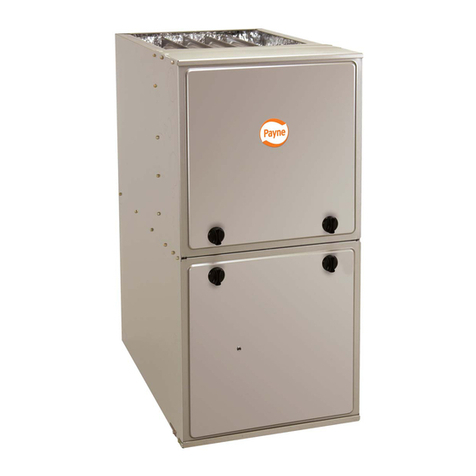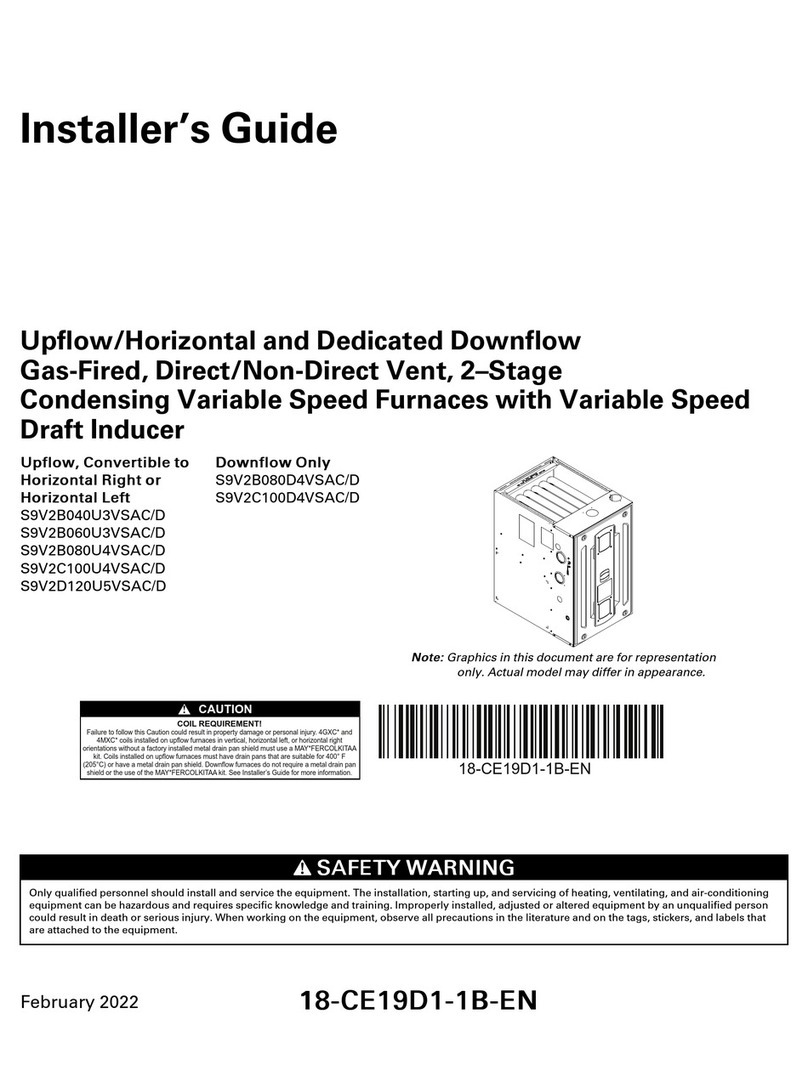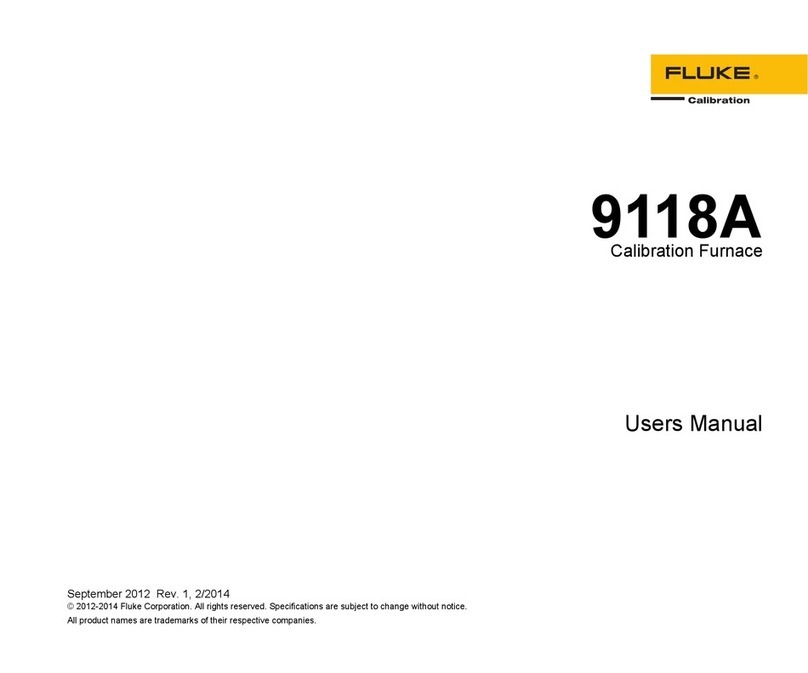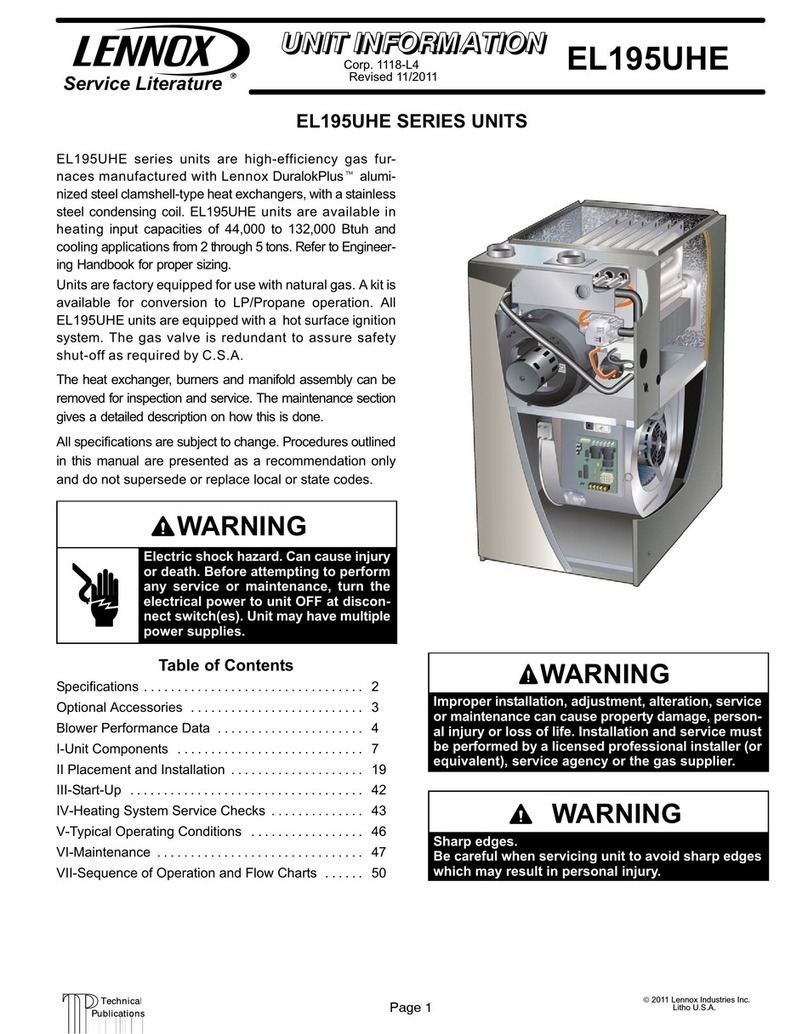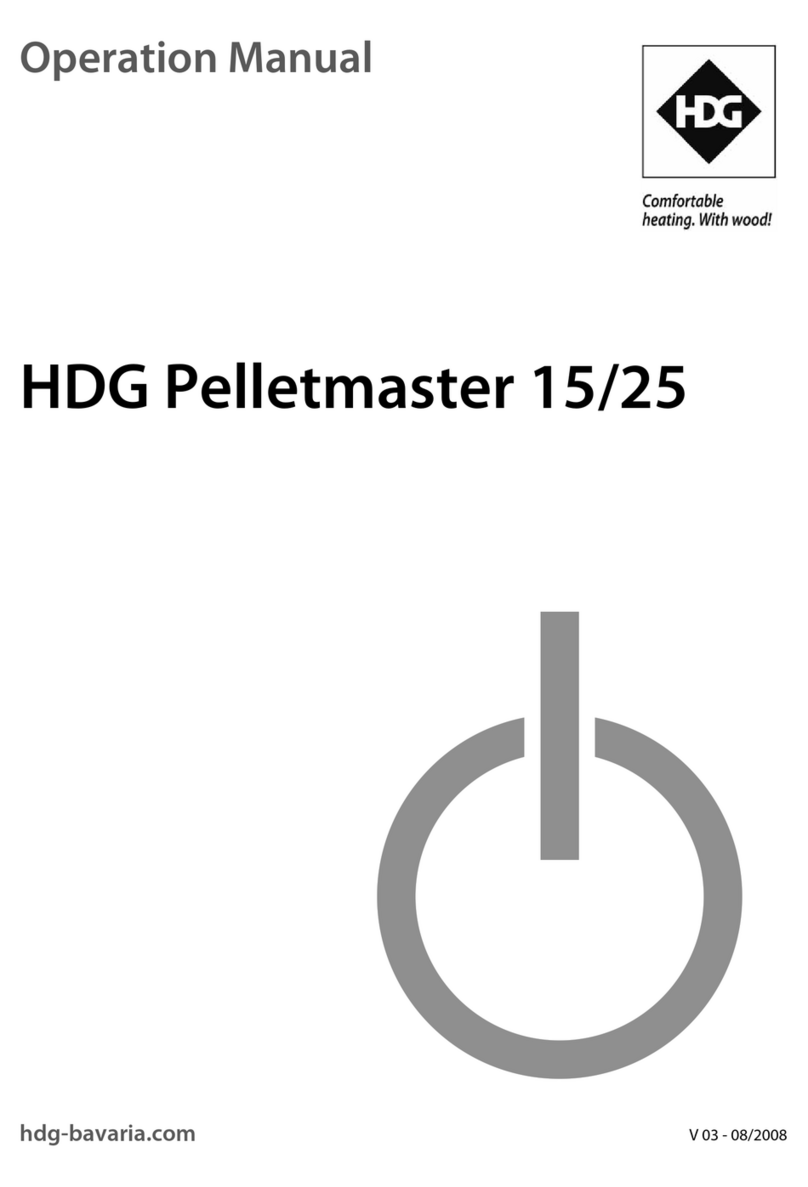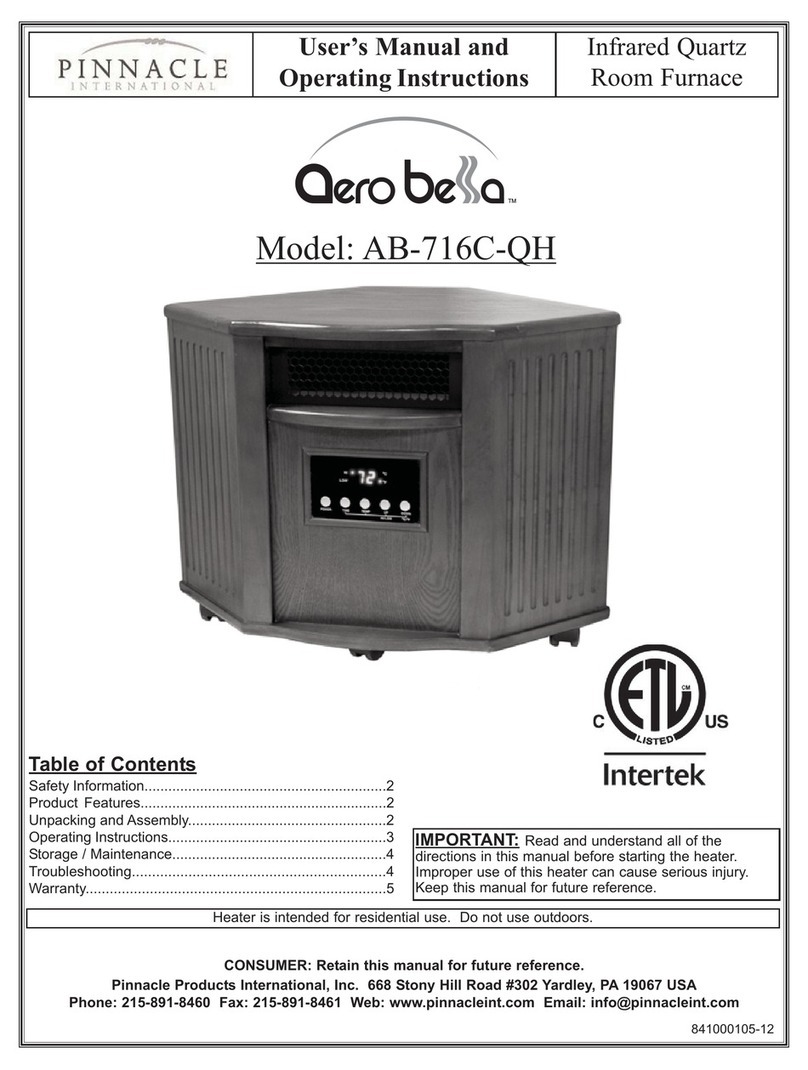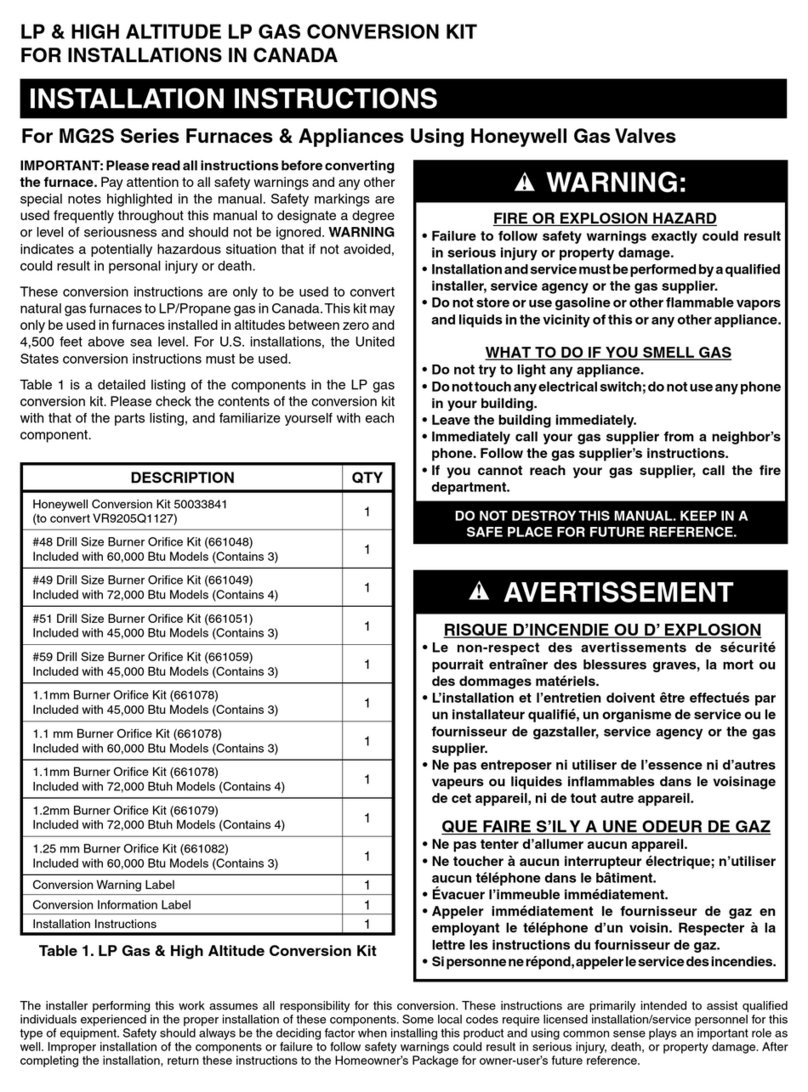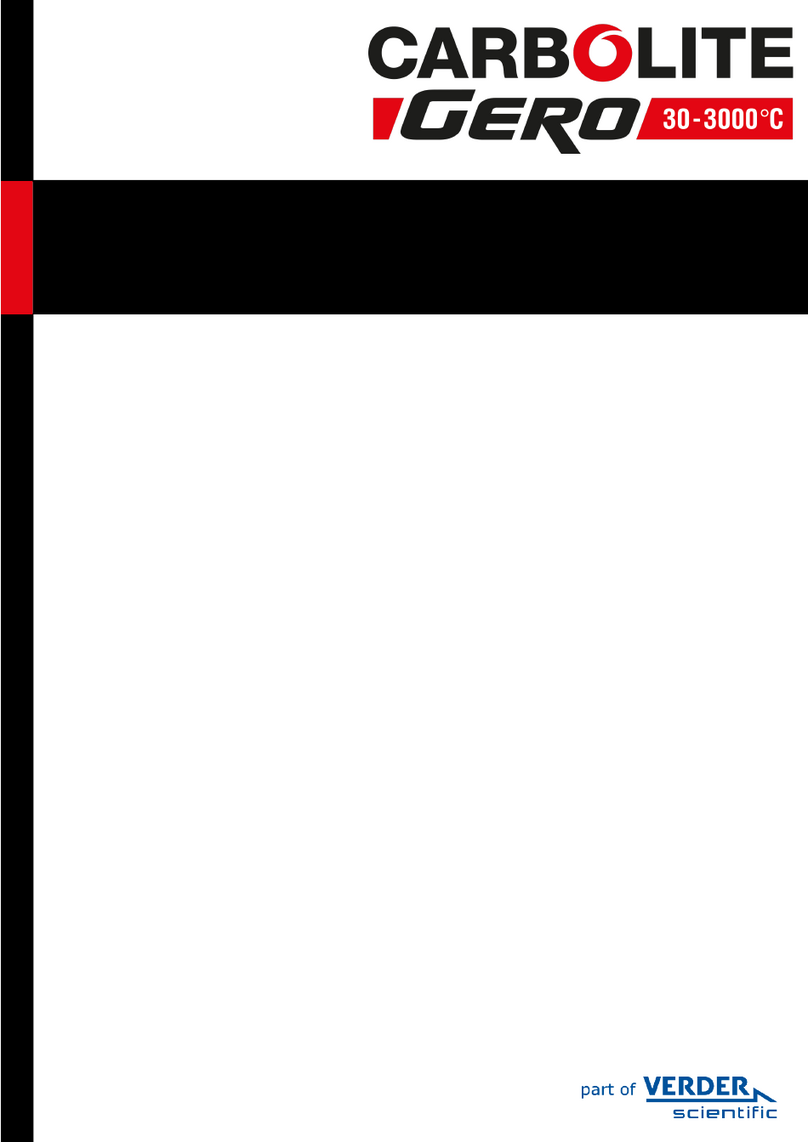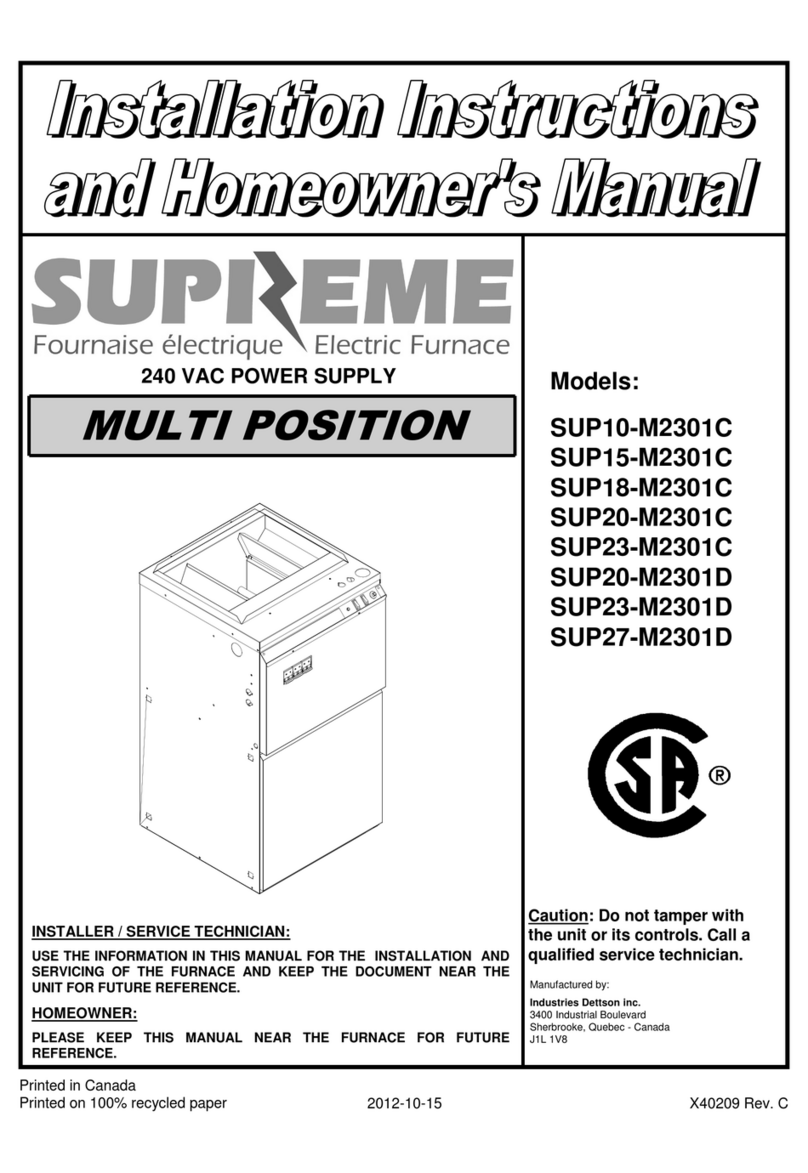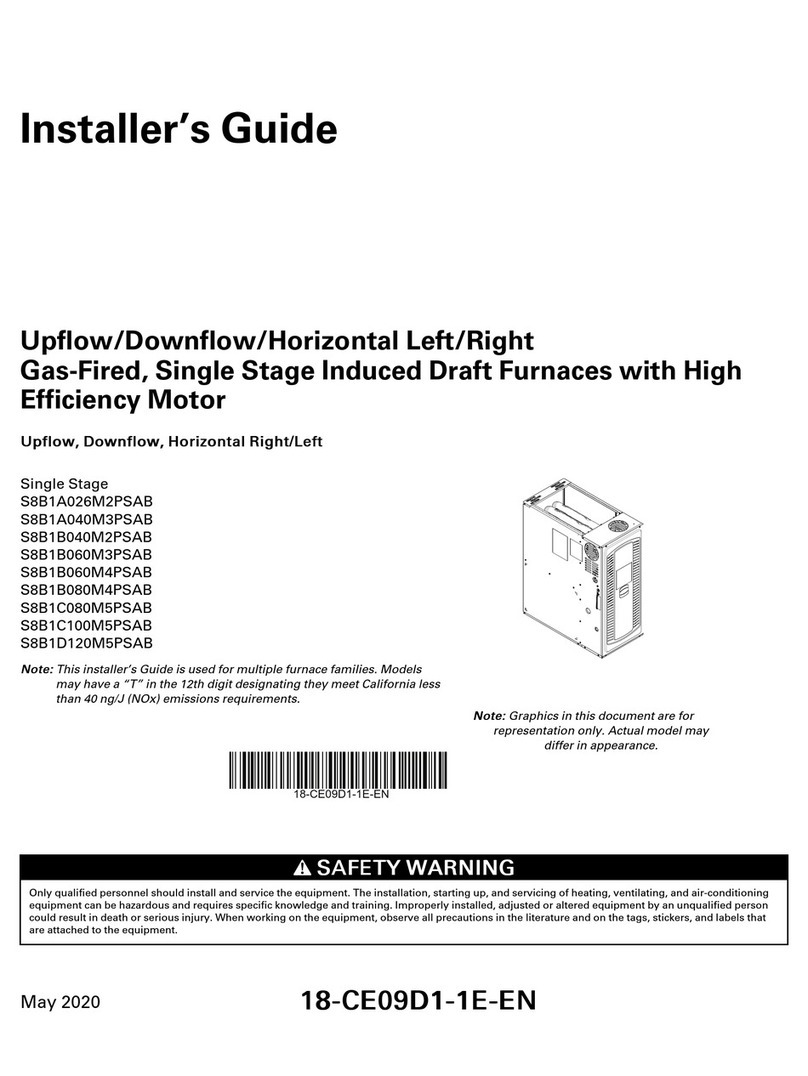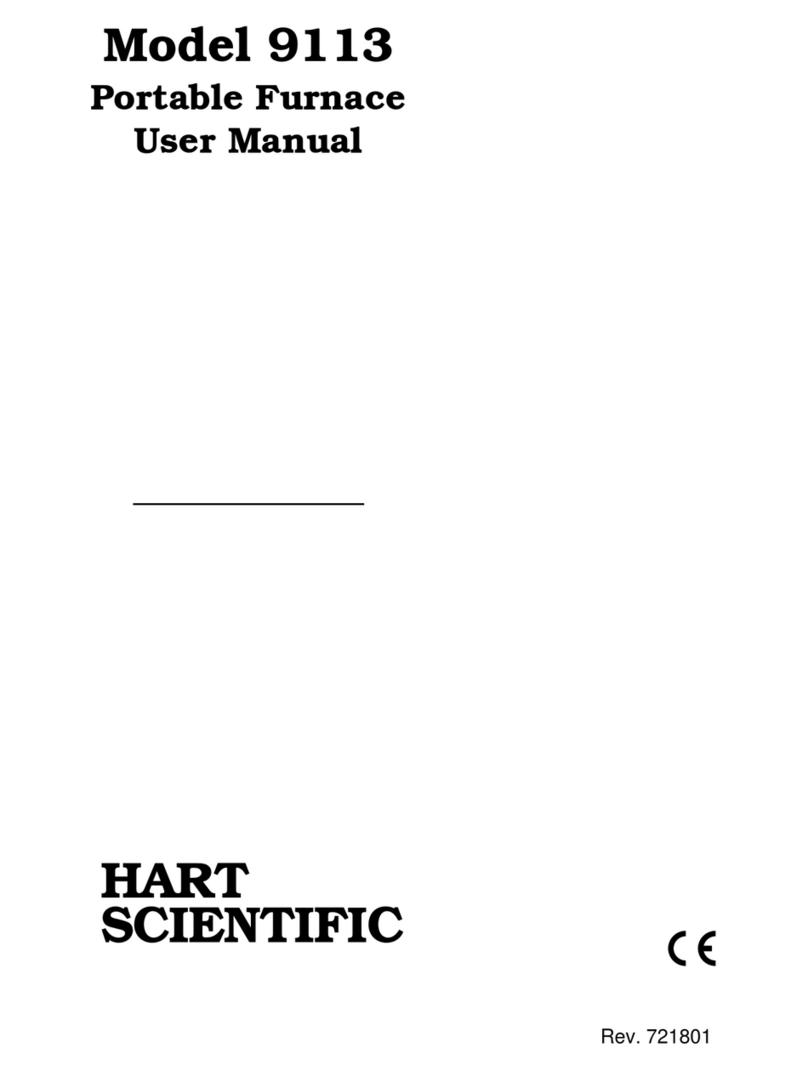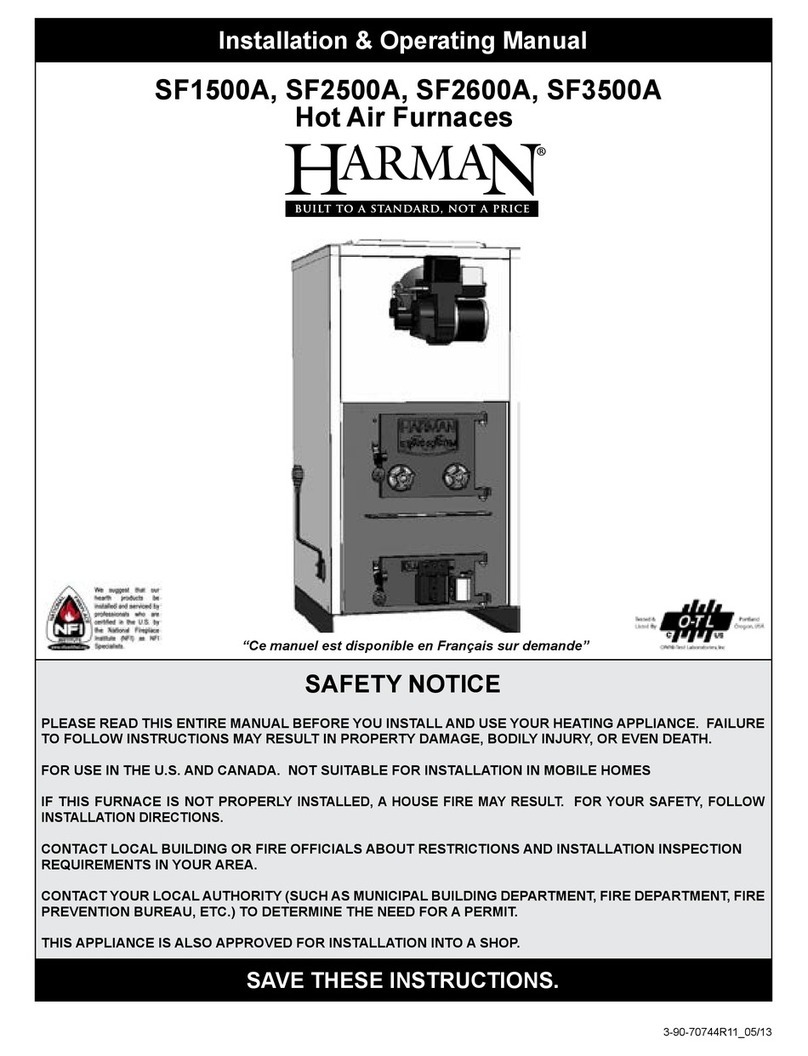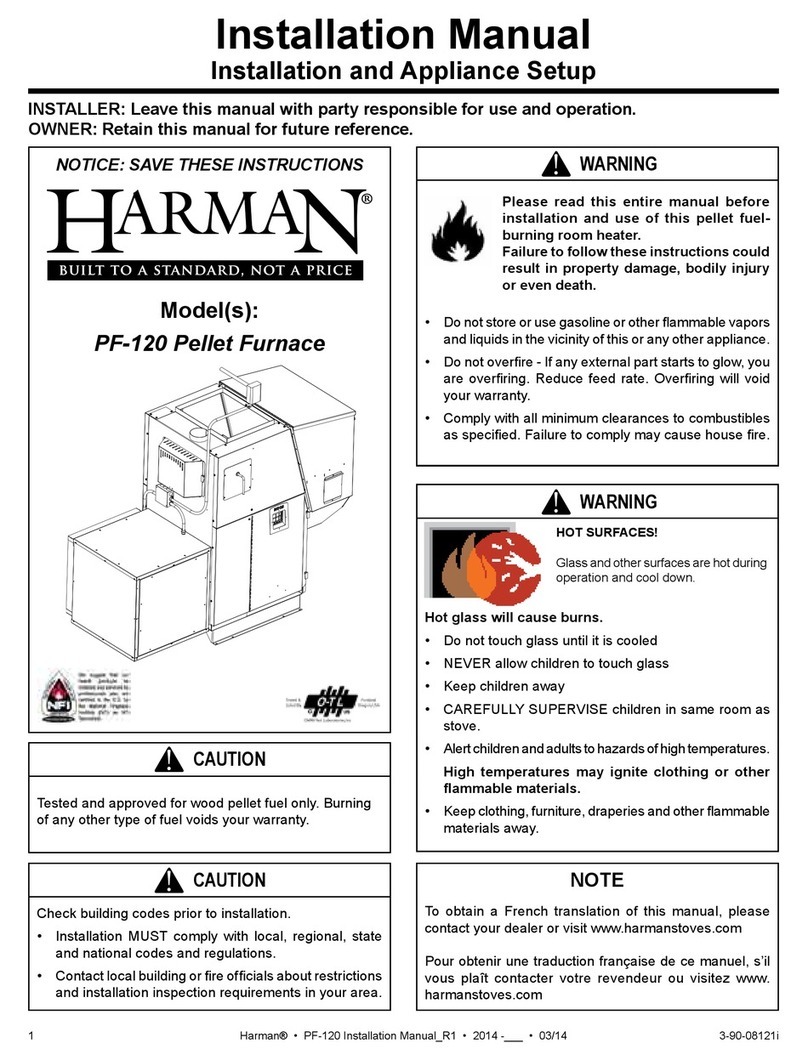
9
A combustion blower is used to extract the combustion
gases from the rebox. This creates a negative
pressure in the rebox and a positive pressure in
the venting system as shown in g. 2. The longer the
vent pipe and more elbows used in the system, the
greater the ow resistance. Because of these facts,
we recommend using as few elbows as possible and
30 feet or less of vent pipe. The maximum horizontal
run should not exceed 18 feet. Remember, the
horizontal pipe sections will accumulate with y-ash
rst. Keep this area clean.
Be
sure to use a starting collar to attach the venting
system to the furnace.
4” pellet vent pipe (known as PL vent) is constructed
of two layers with air space between the layers.
This air space acts as an insulator and reduces the
outside surface temperature to allow a clearance to
combustibles as low as 2 inches. This clearance is
tested and listed by the pipe manufacturers.
The sections of pipe lock together to form an air tight
seal in most cases; however, in some cases a perfect
seal is not achieved. For this reason and the fact that
the furnace operates with a positive vent pressure,
The rst thing needed is deciding where and how
the furnace will be installed.
Things that need to be taken into consideration
are Venting, Supply and Return Ducting, Electrical,
and Condensation Drainage (if A/C is installed).
Don’t forget access to the furnace for service.
When the return air inlet position is known, the
lter box and distribution blower can be installed.
After the furnace is set into place, the venting can
be completed.
The shaded areas are where the
clearances for the PL vent pipe must be
maintained at . After the venting leaves
the shaded area it may be installed as per
the vent manuafacturer instructions. (Only
listed wall pass-throughs and re stops may
be used.)
See
NOTES: on
page 12
16”
16”

